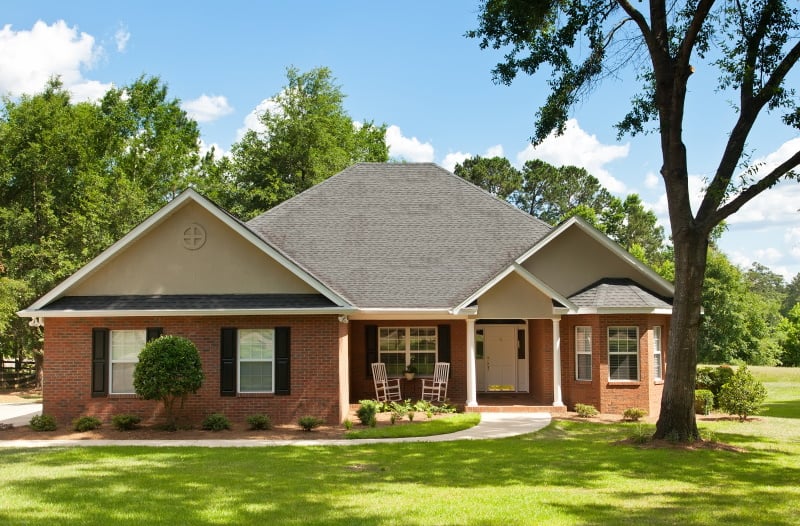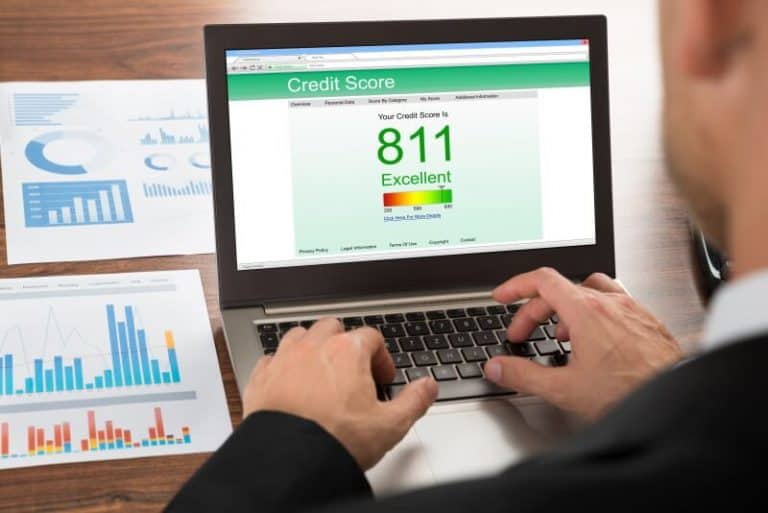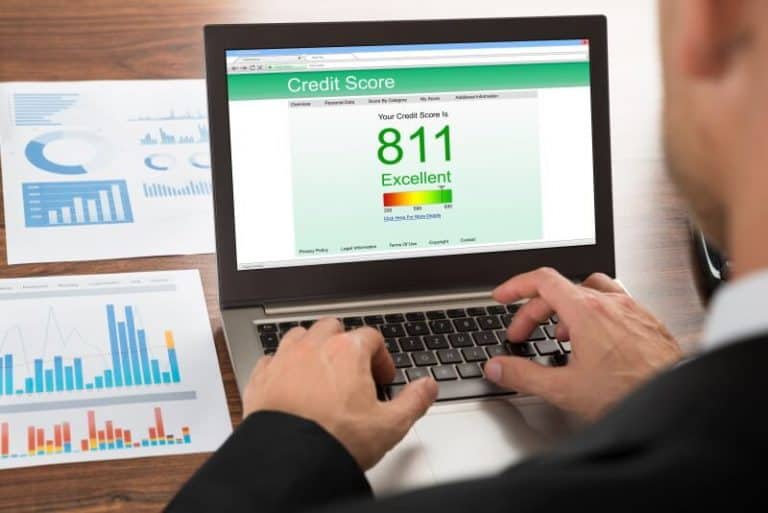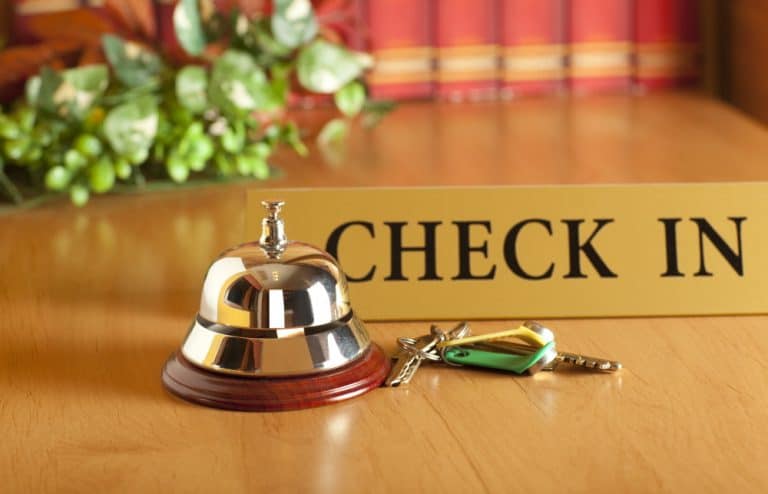How to Live Mortgage Free: 10 Genius Hacks to Ditch the Mortgage
This post may contain affiliate links. Please read how we make money for more information.
Living mortgage-free is a dream for many. For most, homes are the most expensive things they will buy in their lives. And if they didn’t have a monthly mortgage payment to make, it would free up a large chunk of their incomes for other expenses.
Do you know what the word “mortgage” means?
Mortgage is derived from two French words: mort (death) and gage (pledge). A mortgage, therefore, is literally a “death pledge.”
It doesn’t sound so great when you break it down like that, does it? If you have a mortgage, you are a slave to a lending institution. You owe your bank or credit union the equivalent of years of your labor to repay the debt you have taken on.
Lovely, eh?
If you are like most, you are probably wondering if it’s possible to own a home without having to make mortgage payments for the next 15-30 years.
Good news: it’s definitely possible – but you have to be willing to do things differently than most people. You have to think outside of the narrowly-defined box that most people live in.
Let’s take a look then at how to live mortgage-free and explore some ideas you may not have considered.
Table of Contents
1. The Stepping Stone Strategy
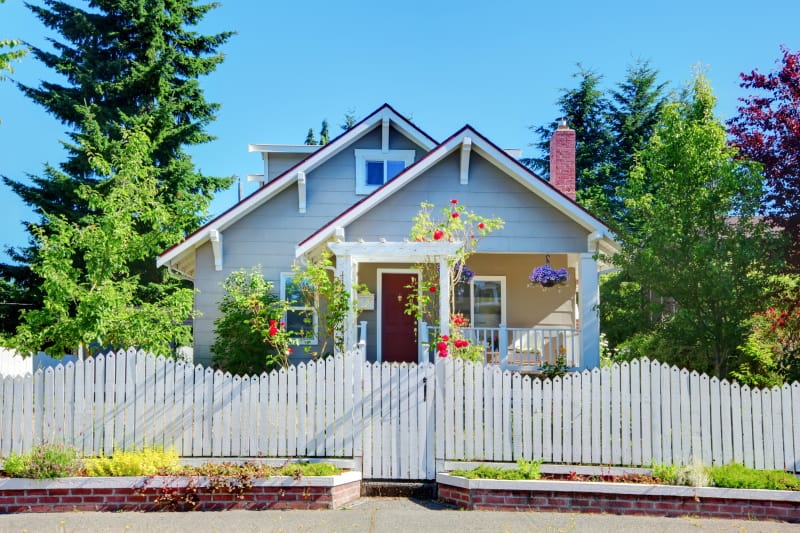
I’m going to lead off this list with one of my personal favorites. It’s a strategy I have dubbed “the stepping stone strategy.”
The stepping stone strategy is very simple. It involves saving your money to buy a very inexpensive home that you own without a mortgage. You then save your money while you live rent and mortgage free and buy a larger or nicer home a few years later and sell your first home. You can apply the money you receive from the sale of your first home towards the purchase of your new home.
You keep repeating the process – taking steps towards your goal – until you can buy and own your dream home without a mortgage.
Your first home could be a small home that needs a lot of remodeling and TLC that you can fix up, a small mobile home, or something else. In other words, you buy a very affordable starter home with your savings that you can live in debt-free.
After you have completely paid for your starter home, you then save your money for however long it takes to buy something nicer or bigger. Your second home doesn’t have to be your “forever home.” Rather, it’s the second step up the ladder towards the home you would ultimately like to live in.
Your second home will still be relatively modest. It won’t be a castle. But it will be much nicer – and more valuable – than your starter home. And, most importantly, because you saved your money and paid for it in-full when you bought it, you will be able to live there without a mortgage. This allows you to save the money you would have spent on mortgage payments to take the next step up the ladder.
You can repeat this process as many times as it takes, but for the sake of simplicity, let’s say that your third home is your forever home. Once you have this home paid for, you have reached the final rung in the ladder.
You made it!
Without a hefty payment on a home to make every month, you can use the money you save to invest for retirement, save for a new vehicle, build your emergency fund, or to do something else.
Most importantly, without a mortgage, you will no longer be a slave to a lending institution. You won’t have to worry about having a “death pledge” again.
2. Build It Yourself
It’s not as crazy as it sounds.
People used to build their own homes all the time. They used to build their own log homes, homesteads out west, and even the Sears catalog used to sell kit homes that people could assemble themselves.
If previous generations were able to build their own homes – homes they raised families in – perhaps you could, too.
About half of the price of a new home goes to the labor that built it. So, if you buy a new home for $200k, roughly $100k of that went into paying the people who swung the hammers, poured the concrete, and painted the walls.
What if you did all of those things yourself? Just think of the savings.
I know what you’re probably thinking. “How could I possibly build my own home? I don’t have the skills to do anything like that.”
Well, Cara Brookins found a way to make it happen. This mother of four and her kids built a beautiful home from information she obtained by watching YouTube videos. She had no previous construction experience.
Where there’s a will, there’s a way.
Instead of thinking of it as building a home, think of it as completing a series of smaller projects that eventually turn into a home. For example, laying the foundation is a project. Framing the walls is a project. Finishing the interior is a project – and so forth.
One thing I want to point out is that if you build your own home, it’s best to hire a professional to do some things, like the plumbing and electrical work. In fact, you may live in an area where the local code requires these things to be done by licensed professionals.
You always want to check with your local authorities to see what permits you need and regulations you need to follow when building any home, regardless of whether you are building it yourself or using a contractor.
An option to consider if you are thinking about building your own home is to use non-traditional building materials like logs, cordwood, straw bales, adobe, rammed earth, and others. These homes can be much more affordable to build than traditional stick-built homes.
Log homes, for example, never go out of style. If they are built right, they are both beautiful and long-lasting. The Log Home Builders Association is an organization that teaches people how to build log homes using the butt-and-pass style of construction. They also teach you how to obtain free logs and other strategies to lower the overall cost.
Dirt Cheap Builder is a site that discusses various forms of affordable home construction. In one testimonial on the site, one couple built a home for $10 per square foot, and that “the whole house cost about as much as the average new car.”
One negative thing to consider if you are thinking about building with non-traditional building materials like cordwood, straw bales, and others is the issue of resale value. Some people may be hesitant to buy a home that is built with different materials than what they are used to. Still, this might be a viable alternative to a mortgage if you plan on staying in one location long-term.
3. The Fixer-Upper
Another strategy for living rent-free is to consider buying a house that needs a lot of repairs and fix it up yourself. The idea behind this strategy is to find a great deal on a home that people want to get rid of because they don’t want to do any work on it. Sometimes people inherit these homes, and sometimes banks sell foreclosed homes that need a lot of work.
For this strategy to work, you do need to be good at fixing things. It’s best if you already have some experience with home repair and remodeling projects.
To give you an idea of what’s possible, a realtor once told me a story about someone who made an offer to buy a dilapidated old home that a bank had repossessed.
His offer?
$1,000.
The bank initially rejected the offer, but after several weeks of not receiving any other offers on the old home, a bank representative contacted him to see if he still wanted to buy it for $1,000. He did. And just like that, he became the owner of a fixer-upper for the paltry sum of $1,000.
It’s important to mention that deals like this don’t happen every day, and it’s unlikely that you will be able to buy a house for $1,000. Even if a house is in such bad shape that it is unlivable, most people will still want to sell it for the value of the land that it sits on.
You may, however, still be able to negotiate a good deal on a run-down home that needs a lot of work. Fixer-upper homes are often hard to sell, and many people just want to get rid of something they perceive to be a white elephant. Because of this, they may be open to offers.
4. Live Rent Free in Exchange for Work
An out-of-the-box strategy to consider for living mortgage-free is to work a job that provides free housing. This is a strategy that won’t work for everyone for the simple reason that most jobs don’t provide this perk. Let’s check out four that sometimes do:
Estate Manager – Some private estates require the services of an estate manager to oversee daily functions and to make sure everything runs smoothly. Estate managers are in charge of maintenance, supervising staff, managing events, and do other things. Some estate managers live in small residences located on the properties they oversee. These residences are often included as part of their compensation packages.
Apartment Manager – Apartment managers oversee the daily functions of apartment complexes. They are responsible for making sure all units stay rented, maintaining the complex, dealing with tenant issues when they arise, and other things. Many apartment complexes allow their managers to live in one of the units for free. This is beneficial to the apartment owner because the manager is often close by if needed.
Elderly Caretaker – There are some elderly who own their homes and prefer to remain in them instead of moving to an assisted living facility. These people may need help with some daily tasks like cooking, cleaning, and other things around the house. A caretaker may be hired to live with that person and help out as needed.
Clergy – Some churches provide free housing to their clergy. These homes are known as personages, and they are often connected to a church or located nearby.
5. Downsize Your Home
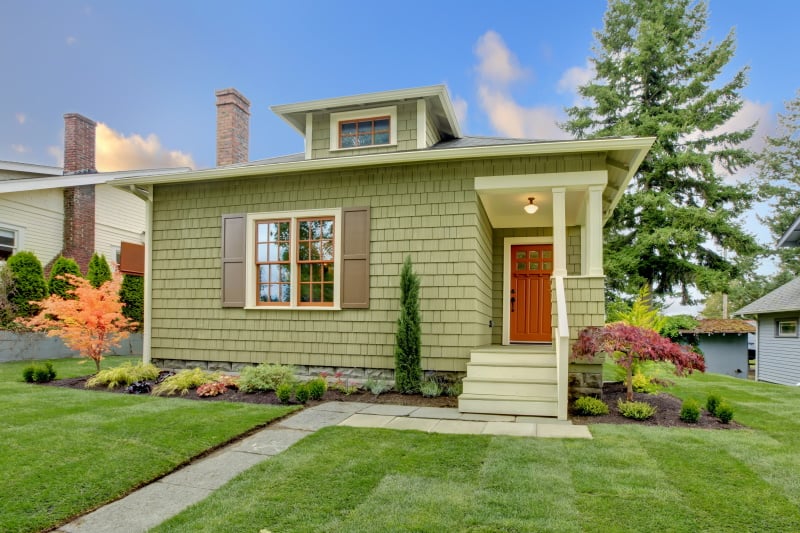
One of the easiest strategies for many to live mortgage-free is to downsize their homes.
The average house size in the 1950s was 1,100 square feet. Today, it’s nearly doubled to an average of 2,100 square feet.
Many people today buy far more home than they need. Got to keep up with the Joneses, right?
Just who are these Joneses, and why do so many worry about what they think?
For this strategy to work, it will require you to already have substantial home equity. Perhaps you bought a large home to raise your family in when you were younger – a home you have been making mortgage payments on for years.
Now that the kids are grown and on their own, it might make sense for you to sell the big house and downsize to something smaller, something you can buy and own free and clear with the money you get from selling the larger home. Even if you still have to carry a mortgage with the smaller home, it could be a much smaller mortgage that you can quickly pay off.
There are several advantages to downsizing your home to consider. It isn’t just about getting rid of the mortgage. Just a few perks of downsizing include:
- Lower property taxes
- Lower property insurance
- Save money on energy
- Easier to clean and maintain
- Enjoy a cozier atmosphere
6. Live in a Duplex
With the duplex strategy, you may still have a mortgage to pay every month, but it will allow you to live rent-free (or mostly rent-free).
With the duplex strategy, you buy either a duplex or triplex. You live in one of the units and rent out the other(s). You then use the money you receive in rent each month to make your mortgage payment.
This strategy depends on how you structure your mortgage. The idea is to bring in enough rent money to cover all of your monthly mortgage payment (or as close as possible to it). It also depends on keeping your rental unit(s) rented.
7. Take in Roommates
A very simple strategy you can use to dramatically lower your living expenses is to take in roommates and split the cost of your mortgage, rent, utilities, groceries, and other things with them. Naturally, this only works if you have sufficient space for one or more roommates.
By taking in one or more people to help out with the monthly expenses, you may be able to save enough money to make additional payments on your mortgage, thus reducing the time it takes you to pay for your home.
A variation on this to consider if you have a 30-year mortgage is to refinance to a 15-year mortgage. Your payments with the 15-year mortgage will be higher than with the 30-year mortgage, but with one or more roommates, you may be able to lower your living expenses enough to afford the new monthly payments, thus shaving years off of the time it takes to pay off your mortgage.
8. Live in a Mobile Home
Living in a mobile home is another way you may be able to live mortgage-free, especially if you purchase a modest used single-wide home.
Mobile homes have earned a bad rap over the years due to poor quality of construction, but modern mobile homes are very different. Many late model mobile homes are actually very nice – luxurious even.
Mobile homes are usually much more affordable than stick-built homes. It’s important to point out, however, that mobile homes tend to go down in value over the years instead of increasing in value like stick-built homes. Because of this, a mobile home should be considered a place to live, and not as a financial investment.
To give you an example of what’s possible, I once saw an advertisement for a single-wide mobile home on a small plot of land that was listed for $35,000. I thought it looked very nice.
You could live in a mobile home long-term, or you could use it as part of the stepping stone strategy previously mentioned and live in one long enough to save your money to buy a stick-built home.
If you are shopping for a mobile home, some people list them with the caveat that the home must be moved. In other words, they want to keep the land but sell the mobile home. This might work fine if you already own land, but if you are interested in buying both a mobile home and the land it is sitting on, be sure the advertisement stipulates that it is for both the home and land.
9. Build a Tiny House
I’ve previously mentioned how you may be able to build your own home to live mortgage-free. But there’s a type of home that many people build that deserves its own discussion – tiny houses.
Tiny houses are very small homes that people build and live in. These homes are usually mobile, too. You can hitch them to a truck and move them from one location to another. Tiny houses rarely exceed 500 square feet. And the ones on wheels are usually less than 8×20 feet.
The main advantage of building and living in a tiny house is the cost. Although there are companies that build and sell these homes, the real savings comes in building one yourself. Costs vary depending on the materials you use, the design of your home, how much of the work you do yourself, your scrounging ability, and other factors.
People have built tiny homes for under $10,000, but it’s not uncommon for the cost to be $18,000 – $25,000 for the materials. A tiny house can be completed in 6-12 months if sufficient time is devoted to the project.
In addition to living rent and mortgage-free, there are several benefits to living in a tiny house. Just a few include:
- You can travel and take your home with you
- Highly customizable
- Environmentally friendly
- Energy efficient
- Easy to clean
- Easy maintenance
- Easy and affordable to decorate
- Simplify your life
Tiny houses aren’t for everyone though. They do have their disadvantages to consider. Just a few include:
- Very tight living space
- Zoning issues
- Limited storage space
- It may be difficult to obtain financing for a tiny house
- Limited room for entertaining
If you are interested in learning more about tiny houses and whether this would be a good housing option for you, Tiny Home Builders has extensive information on the subject.
10. Live in an RV
In many ways, living in an RV is very similar to living in a tiny house. The main difference is that you don’t have to build an RV – they are made in factories.
RVs come in a variety of configurations with many different features. Some RVs are very fancy and cost hundreds of thousands of dollars each, while others are much more modestly priced. RVs that you can drive typically cost much more than RVs that are towed behind a truck.
As I was writing this article, I did a quick search of used RVs for sale within a short driving distance of my home and found several models in great condition for under $20k.
If you purchase a used RV, you can put it on land you own. Another option to consider is to put it in an RV park. In an RV park, you will have to pay a monthly fee, but the benefits of staying in a park may include access to electrical, water, and sewer hookups.
Mortgage Free Is the Way to Be
Not all of the strategies in this article will make sense for everyone. The best strategy will depend on your unique situation, your goals, your income, and whether you live in a city or in a rural location.
Living without a mortgage is definitely possible, and there are several great strategies you may be able to use to make it happen. Ultimately, it depends on how bad you want to get rid of your mortgage and whether you are willing to take a path to home ownership that is different from what most people take.
Unless you win the lottery or inherit a house, it’s unlikely that anyone is going to give you a house. That leaves you with two choices.
First, you can take the road that most people take where you buy more house than you need with a 15 or 30-year mortgage and spend a large part of your adult life repaying it.
The second option is to take the road less traveled and buy an affordable home that you can buy with your savings or with a loan that you can quickly repay.
The choice is yours.

